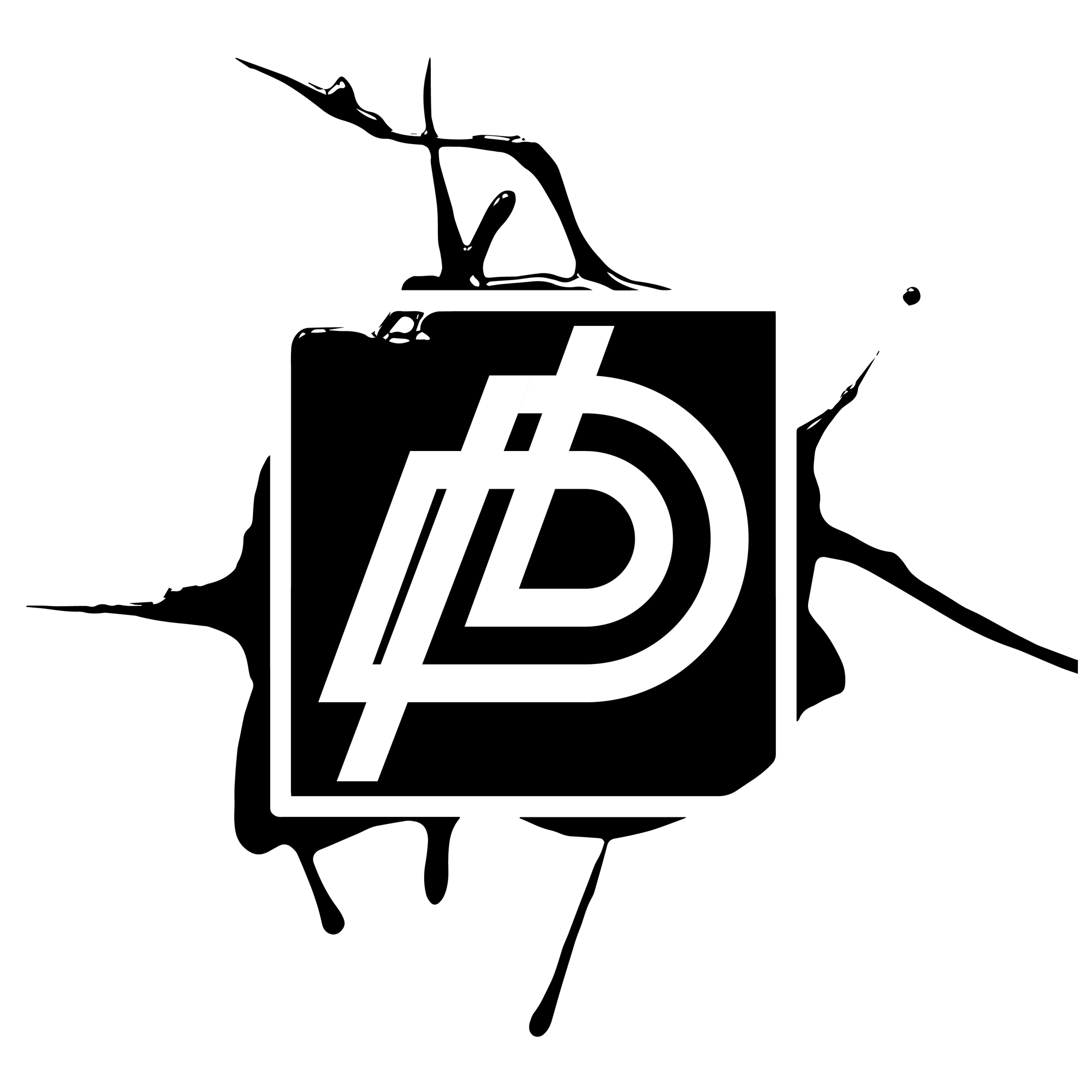Should you start a SaaS business? 4 alternative business models for 2025 and beyond

Because to me, the idea of building software for humans seems a little out of touch. After all, getting your SaaS (Software as a Service) to USD 1M in ARR (annual recurring revenue) will take a lot of time – often at least five years.
And a lot can change in five years.
The chart below shows the focus areas of the Winter 2024 batch of Y Combinator startups, in a cluster analysis by Deedy Das.
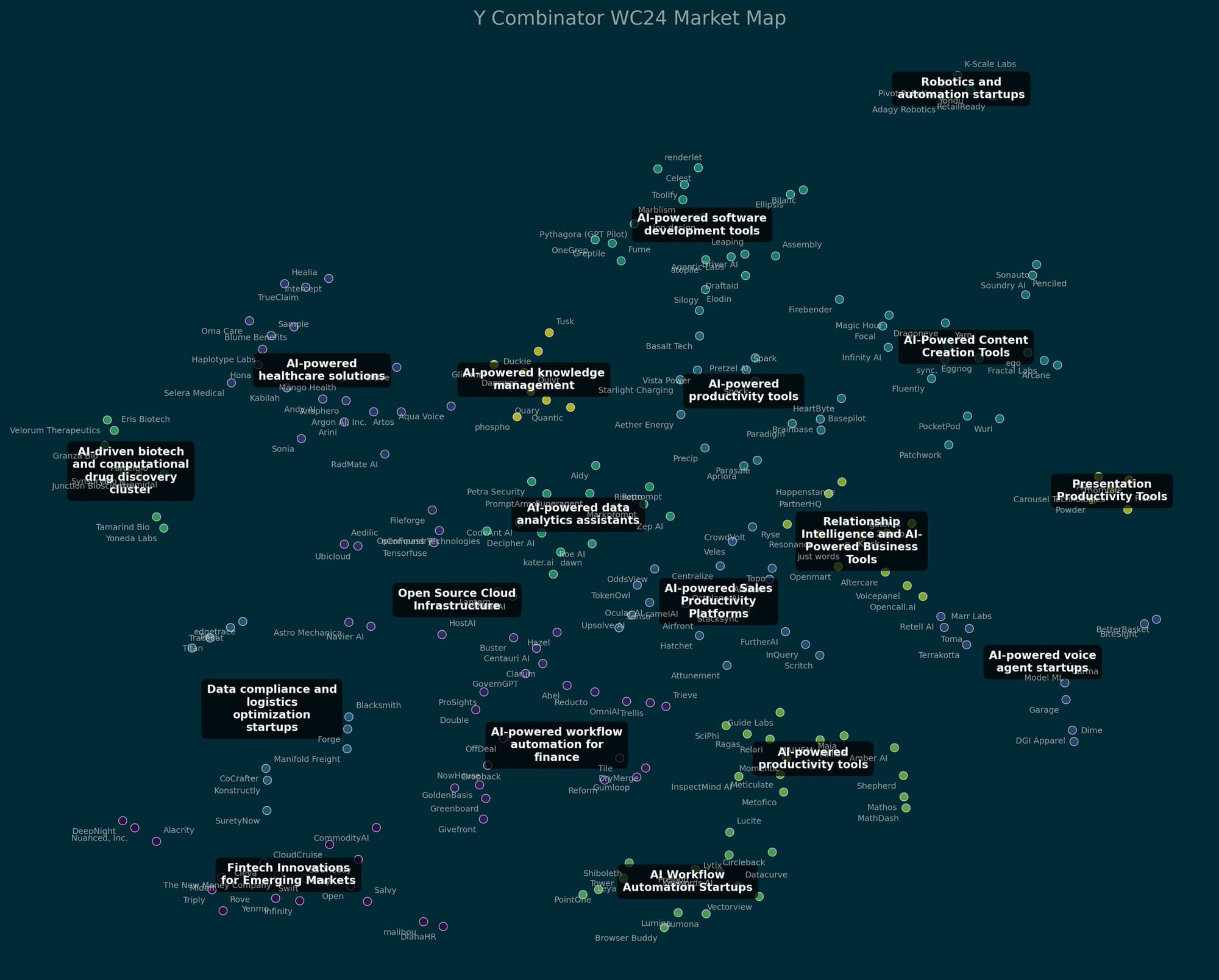
As you can see, 90% of the startups in the batch are doing something with AI.
This has been the case for the last three or four YC batches.

Then there is the amount of venture capital backing AI startups. According to Crunchbase data, in Q2 of 2024 roughly 30% of all VC investments went to AI:
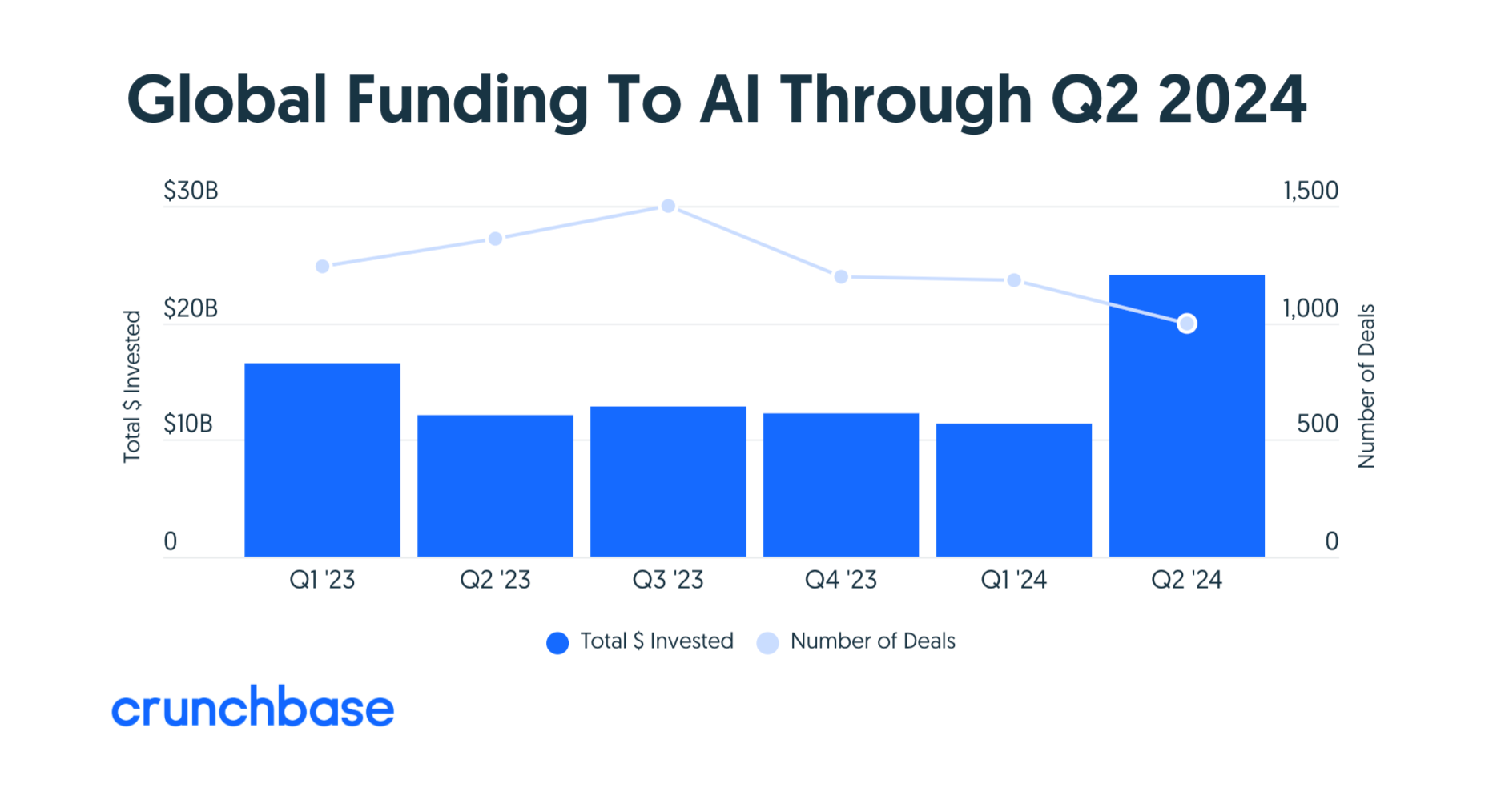
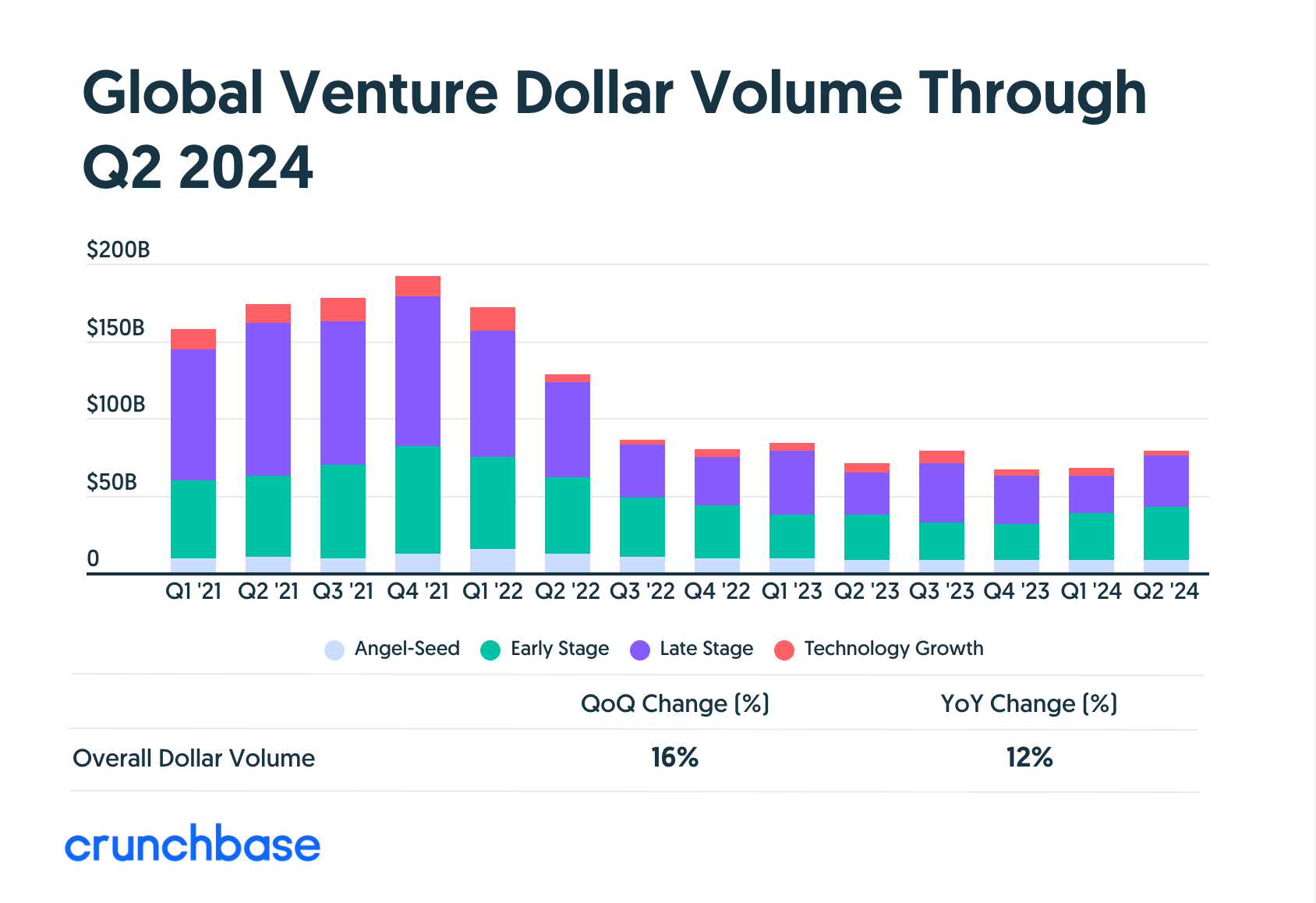
Global VC AI funding reached USD 24bn in Q2 of 2024, out of USD 79bn invested (Source: Crunchbase).
All right, you will say – I'll just start an AI SaaS (ASS for short) and I'm golden!
Hello VC dollars! 👋💸.
My humble take on the bustling AI cottage industry is that if you adopt the SaaS business model and try to bolt on AI to satisfy investors, you're setting yourself up for failure.
Okay, I don't want to be an ASS. What are the alternatives?
As far as I can tell, there are four main alternatives* to the SaaS business model that will dominate the next five to ten years.
Each of these business models will see its own degree of success:
- Digital professional services: software that performs value-added activities with minimal human oversight. Digital accountants, marketeers, lawyers etc.
- Integrated service providers: software that automates part of the value chains of larger organisations. E.g. HR automation, operational AI etc.
- Agencies and freelancers: trading time for money to drive client results.
- Entertainment: participators in the booming creator economy.
Before we dive into nitty gritty of each of these four business models, let's first look at the Software-as-a-Service model so we can understand the differences.
The way I see it, the current SaaS model evolved directly from desktop software. A "SaaS provider" is primarily a software vendor. The “service” part in Software-as-a-Service comes from the fact that most business software products in 2024 offer rolling upgrades, operational support and other add-ons for their products.
The main driver to move from off-the-shelf single purchase software products to “software services” was the maturing of modern internet infrastructure. With high-speed internet available almost everywhere, software vendors were able to do a number of things that weren’t possible before:
- Provide continuous updates to software products that have already been bought and are already being used by existing customers.
- Host all or parts of their digital infrastructure in own or hired data centres, substantially increasing the capabilities of their products while at the same time decreasing the cost and complexity of onboarding new customers.
- Charge higher prices because they were providing additional value (so you could also call the SaaS model the "Subscription as a Service" model 😄).
Nevertheless, most software products built by SaaS companies are still very similar to off the shelf desktop software in at least one way–they cater to human users and rely on human expertise and knowledge to make them work.


The transition from human computers (ca 3000 BCE-1945 CE) to desktop software (1980s-2025 CE) is actually not that big.
And, most importantly, the “services” provided by these SaaS products are often very limited in nature. Rather than providing accounting services, typical SaaS accounting software provides a system of record in which accountants do their thing. A “marketing automation SaaS” typically provides software that allows third-party marketing agencies to manage the marketing campaigns on behalf of their clients.
Hopefully you see where I’m going with this. There is a lot of indirection in SaaS software stemming from the human interfaces it needs to support, a lot of data lost in translation, and consequently a lot of unnecessary bloat and complexity in the software designs and data flows need to run these kind of automation systems.
So how are the four business models mentioned above different?
Whereas SaaS products are typically software shells around systems of record that rely on humans to do most of the work, these new models replace business processes, internal services and professional services with highly automated software solutions that rely on a mix of AI, smart controls and data.
In other words, professional and integrated services software (and the agencies and freelancers helping implement these solutions) flip the burden of work from 80% human and 20% automation (in SaaS) to 80% automation and 20% human (for professional and integrated services).
Let's look at each of them in turn.
Digital professional services
The slow but steady advance of agentic AI solutions is probably the biggest indicator that the degree of agency in software solutions is slowly increasing.
This will lead to software systems that are able perform value added tasks more or less autonomously. And I'm not just talking about your lawyer or accountant using more AI – I'm talking about your lawyer, accountant, instructor or marketer being an agentic AI system with minimal human oversight.
I think that software companies that are building the digital lawyers, accountants, marketeers, teachers or any of the other professional services that can be performed almost entirely online will be among the big winners in the next ten years. Because what law firm will be able to compete against a build-once scale-forever solutions that will only improve with time as AI models become more advanced and powerful?
You might ask, isn't this still just an ASS?
It is not, because even though some of the start-up economics are the same as in a SaaS company, the revenue model is completely different.
Digital professional services (DPS, for want of a better term) perform value added activities for their customers, so a much better fit in terms of aligning company and customer incentives is to let customers pay for the quality and amount of work done rather than just for access to your services.
That means that key to nailing this business model is to get your unit economics right. We'll see a lot of one-off payments and "compared to your local .. " pricing, where a large cost driver for DPS firms will be LLM provider usage.
I'm working on a DPS product myself with AI from scratch (automating AI courses with AI tutors, where I'm pricing based on LLM API usage with something like prepaid credits), but perhaps a better example is Pieter Levels' PhotoAI.com service that replaces professional photoshoots with AI-generated images:
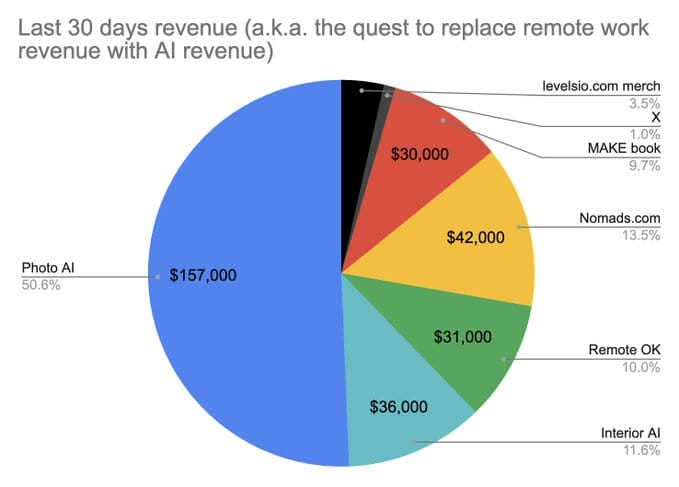
Integrated service providers
Of course, creating a digital counterpart of a consumer or business service isn't always possible. Advances in robotics are a bit of a wildcard, and even though some cities in the US and China have robotaxis it's still very early days when it comes to automating manual labour.
China is probably the furthest ahead on this front, with approximately 1.8 million industrial robots working in Chinese factories and 51% of all industrial robots installed in 2023 installed in China.
But, given the costs and complexity involved quite a few manual tasks are still going to be out of reach of automation for the foreseeable future. So the companies delivering products and services with a physical dimension still need SaaS, right?
I'm not so sure.
My best guess is that any software product that isn't complementary to a hardware product will be radically reinvented over the next ten years, and that the area that will see most change is the traditional business function – marketing, accounting, customer service, finance, payroll, HR etc.
This trend is already happening in customer service, where companies are shifting their outsourcing strategy from sourcing in low-wage countries to sourcing from AI agents (I've written more about agentic outsourcing in this post).
And I don't think this is an anomaly. I think this is part of a wider trend in which many business functions will be replaced by integrated service providers (ISPs).
The main business model of ISPs will be to automate entire departmental workstreams with a combination of AI, data integrations and human QA.
Initial pricing will again be done "compared to humans" (CTH), but with one main difference compared to DPSs: ISPs don't provide standalone value, but only create value in the context of the organisations they are integrated in.
That means that ISPs are closest to the current enterprise SaaS providers, and will probably continue to use some form of subscription-based contracts, even though unit of work pricing will probably also gain popularity. E.g. subscriptions with a base fee and additional costs based on the number of contracts, contacts, pupils, campaigns or disputes processed.
If you are looking for examples on how to price your ISP, you only need to look at cloud providers and analytics platforms like AWS, Google Cloud, or Databricks to see how this could be implemented: a basic service contract + cost per compute.
Professional and integrated services software flip the burden of work from 80% human and 20% automation (in SaaS) to 80% automation and 20% human.
Agencies and freelancers
The same advances in AI will also massively impact what agencies and freelancers can bring to their clients. Besides new types of work to integrate IPS solutions for their customers, they can also be brought in temporarily run entire workstreams using third-party IPS software.
Expertise and experience will still command a premium, and probably even more so because of the leverage experts can get from AI solutions. Whether it is AI assisted software development, using the latest DPS or ISP software, or just knowing the right software solutions to use, rapid advances in AI will open up a lot of opportunities to create massive amounts of value for your clients.
One area I'm most excited about is the increased rate of AI adoption in small and medium businesses. As DPS and ISP software matures, their running costs will make it possible even for local businesses to integrate AI into their operations – and benefit massively in the process.
The creator economy
Or, as it used to be known, online courses. Because that is still the most profitable gig in the creator economy, which is slated to generate roughly USD 250 billion in 2024 – bigger than the entire Portuguese economy.
The rise of social platforms and corresponding decline of linear mass media, along with the slow pace of change in traditional education institutions has opened up a lot of opportunities for small time creators to launch online businesses, creating hundreds of thousands of mini media agencies in the process.
These mini media agencies are earning money from a mix of consulting, coaching, courses, ads and paid communities in 2024.
For a closer look at the revenue breakdown in this business model, check out this recent write-up by whop.com. And if you're interested to learn more about the creator economy, I've written a blogpost about it a while ago.
Meet your future customers
The year is 2029. The US has its first AI president. The moon colony Luna I – known colloquially as Looneytown – has reached a population of 1,500.
Given the trajectory of advances in AI, what will be possible in 5 years? Will 15% of US households have a robot helping them with household chores? Is having a private automobile now considered an unnecessary luxury by the majority of the global population? It's hard to tell exactly what the world will look like in 5 years, but it's also – in my opinion – bad business strategy not to plan for advances in AI.
So, if you want to sell your company at some point the DPS and ISP business models are probably the way to go. The main difference between a DPS and ISP business is that ramp-up time and runway (the amount of money needed to get to break-even revenue figures) are probably going to be longer for ISP businesses, since like B2B SaaS companies they're dealing with larger customers that often take longer to decide on which services to bring in-house.
Agencies, freelancing and entertainment are more dependent on your time and effort so they have a much bigger key man (or woman) risk than DPS and ISP businesses. On the other hand, they are also easier to start and will be profitable from day one – assuming you can find paying clients.
One route I'm particularly fond of that has been gaining a lot of traction recently is to start with freelancing and then build DPS or ISP software around customer demand. This corresponds to a growing trend among AI startups to not look for additional rounds of funding, but instead choose to bootstrap growth through paying customers.
It is of course also very much possible to mix and match the four business models described above, and I expect a lot of the most successful companies to leverage at least two of them (e.g. DPS + ISP hybrids, or agencies with a DPS or ISP offering).
Either way, the most common advice I heard about starting a business during MicroConf Europe 2024 was to "just start – you'll figure things out along the way".
And finally a big disclaimer here: despite 10 years of building AI models, systems and solutions that predict the future, I of course have no idea what the future will actually bring. Take all the advice in this blogpost with a grain of salt, and do your own research before starting anything.
*) I'm not discussing a fifth business model here since it's incredibly rare so the odds of you building one of these are very small – the platform play (e.g. Google, Meta, NVIDIA etc.). If you're interested to learn more about those, I've written about the impact of AI on computing platforms here.
